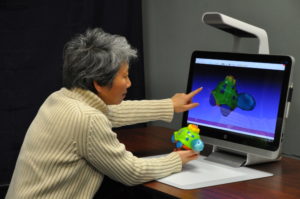Augmented Reality – Next Frontier for Competitive Advantage
An article released by Cio talks about Augmented Reality being the next frontier for competitive advantage. There is an inflection point where IoT, Cloud and AI started to converge together to lay the foundation for new set of business applications. They believe that one of the most interesting developments where this convergence comes together is the field of Augmented Reality.
The article suggests that AR is the blending of VR and real life; AR applications have virtual images that blend in with contents in the real world. With AR, users are able to interact with virtual contents in the real world, and are able to distinguish between the two worlds within the same experience. AR may have far greater applicability as it links the digital and analog worlds.
The article states that smart factories driven with Industrial IoT advancements also provide specific use cases where AR can add to competitive advantage of an enterprise. An AR enabled solution can enable monitoring of plant assets from a virtual control room with real-time sensor data that monitors heat, pressure, scrap and other key characteristics. The IoT data can be visually overlaid with machine data such as schematic drawings, service steps and increase the efficiency and productivity of industrial facilities by enabling maintenance personnel to see the most pertinent sensor data in an AR view.
They believe that AR applications in the medical field can be significant and can change the way medical professionals interact with each other during a diagnosis or a surgery. A remote team of surgeons can get the first-hand view of an ongoing surgery with all vital stats overlaid along with medical records such as MRI on a head up display. The AR technology will also be of interest to architects and smart city planners who could create virtual 3-D walkthroughs from existing 2-D blueprints overlaid with construction equipment, people, interior decoration and other geolocation data.
They believe that the most important step in getting your enterprise AR initiatives off the ground is to evaluate and select an AR framework and have said “There are quite a few open source & commercial platforms that provide rich SDK. The purpose behind selecting a platform is that you can focus on the features of your applications and the platform provides the capabilities like 3D object tracking, face tracking, visual search, camera calibration, content APIs and support for various marker types (e.g. square, QR code). The platform needs to have support to recognize image targets through a cloud datastore as well as local image store. This improves application usability as it can work both in connected and offline mode.Eventually AR is an interface paradigm shift that would completely rewrite how we would interact with everything.”
